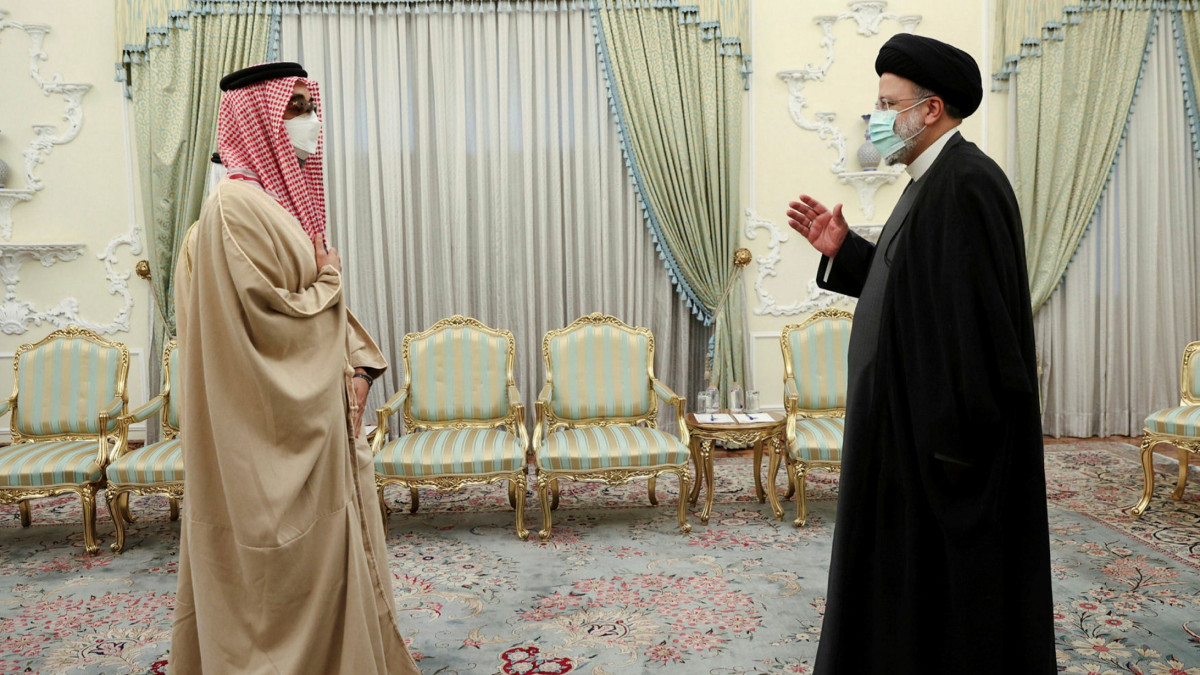 78
78
For the first time, Tahnoun bin Zayed Al Nahyan, the National Security Advisor of the UAE, paid an official visit to Tehran on Monday. This journey took place in a very different regional setting than a few years ago, with more bilateral cooperation between Tehran and Abu Dhabi. The recent talks between Iranian officials and their Emirati counterparts resulted in reconciliation but not tangible political and economic cooperation. This comes as discussions between Iran and Saudi Arabia have come to a standstill. Meanwhile, the Saudi Crown Prince arrived in Doha at the same time as Erdogan as part of a regional trip organised by the Persian Gulf Cooperation Council that would take the Arab prince to five Persian Gulf nations. Turkey has made significant headway in redefining its relations with Egypt, Saudi Arabia, and the UAE. Tahnoun bin Zayed has made a $10 billion investment in Ankara as part of a large commercial arrangement. Despite Iran’s warnings and threats, Abu Dhabi has forged strong ties with Israel in the past year and a half, while Tel Aviv’s political and security clout on Iran’s southern frontiers is expanding. During a phone discussion and, ironically, around the same time as Tahnoun’s unusual visit to Tehran, Muhammad bin Zayed, the Crown Prince of Abu Dhabi, or in other words, the de facto ruler of the UAE, invited Isaac Herzog to visit the UAE. Despite the ongoing expansion of links between the UAE and Israel, Iran, too, is striving to broaden its ties with Abu Dhabi in light of shifting regional dynamics. Since Abu Dhabi is well aware of the geopolitical realities of the Middle East, it appears that it has started paying attention to its northern neighbour, Iran. Whatever the obstacles, the question now is when Iran and the United Arab Emirates will resume normal relations. Even if tensions between the two nations eased, political and economic cooperation is unlikely to return to pre-crisis levels in a short period of time. Several factors play a part in this equation. First, as a key US partner in the area, the UAE will not engage in commercial cooperation with Iran that might violate anti-Iranian US sanctions. This is also when the Israeli factor comes into play. As a result of unresolved problems, regional tensions between Iran and its southern neighbours have morphed into larger ones between Iran and the Wes. In this regard, Robert Malley, the US Special Envoy for Iran, during a recent visit to the Gulf nations, explicitly linked the development of relations between Iran and its southern neighbours to the revival of the nuclear deal. On the other hand, Riyadh’s ties with Tehran directly influence Iran’s relations with the other Arab Gulf states. This means that until Iran and Saudi Arabia considerably mend fences, the UAE, Bahrain, and other nations in this area are unlikely to establish completely normal diplomatic and trade ties with Iran. There is still high antagonism between the Arab Gulf states and Iran, and reestablishing trust takes time and needs the formation of conditions that are presently missing. After years of animosity and ups and downs, it takes time to build trust. The recent large arms deal between the UAE and France shows that the Arab sheikhdoms are concerned about the future. Accordingly, it’s reasonable to ponder why these countries are engaged in such high-level dialogue with Tehran. Finally, in light of the current US administration’s open diplomacy with Iran, each of these Arab countries recognises Iran’s tremendous economic potential in the years and decades ahead and wishes to work with Tehran to resolve their disputes.
Comment
Post a comment for this article